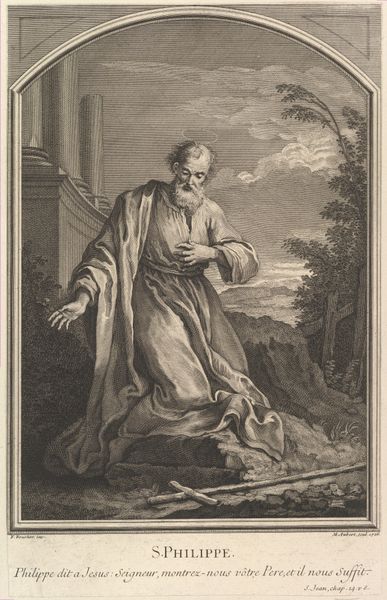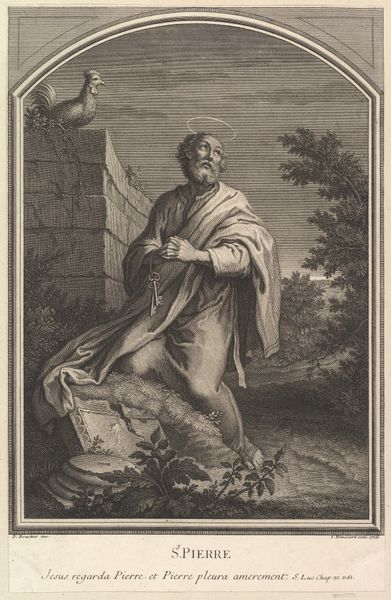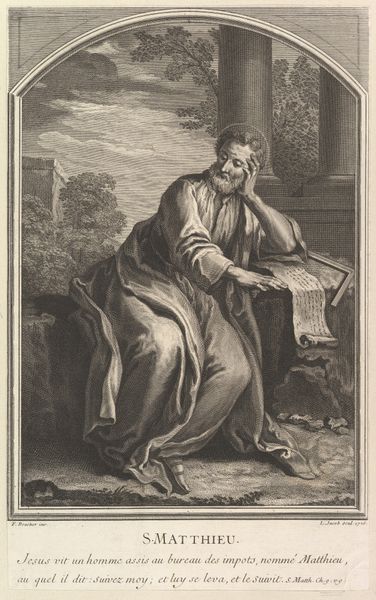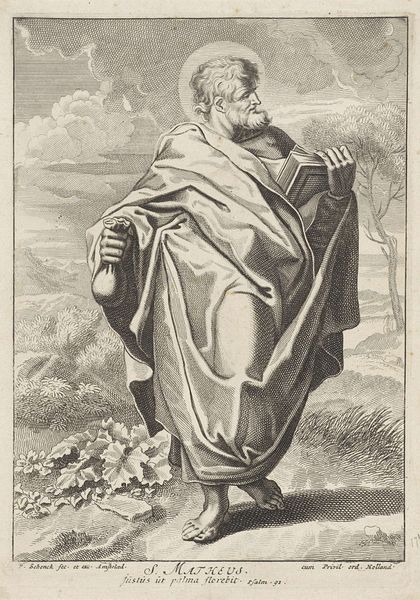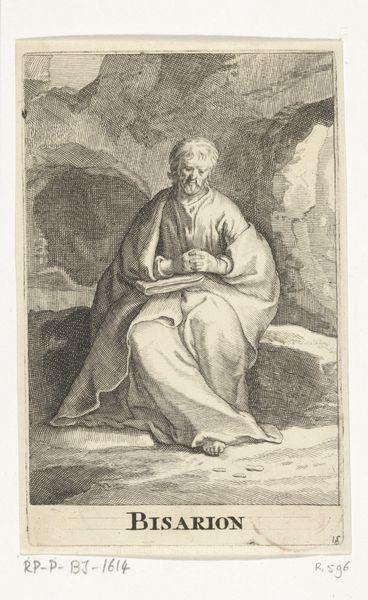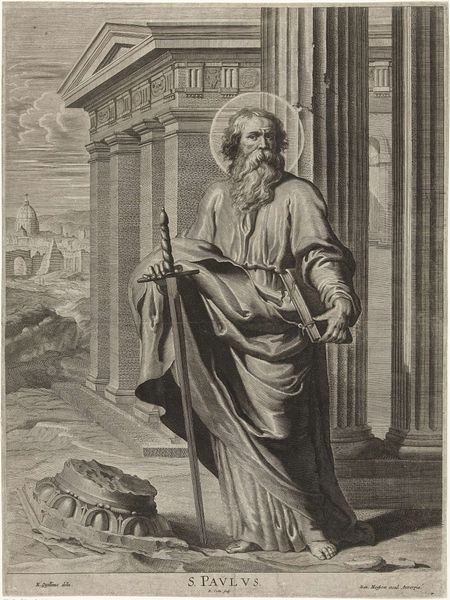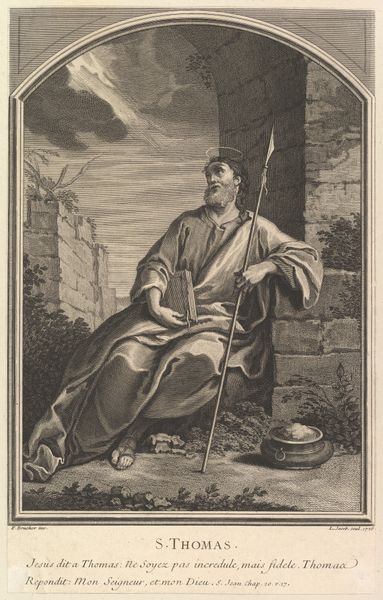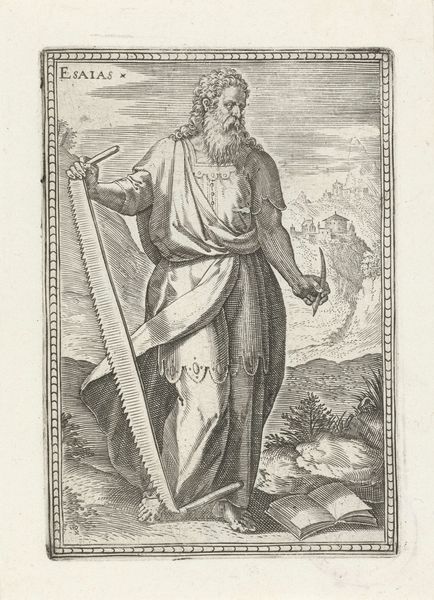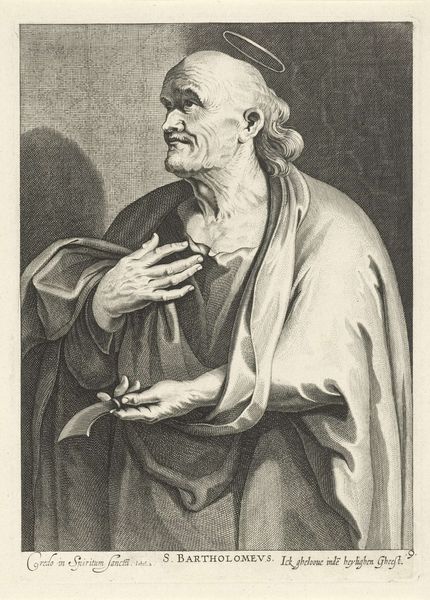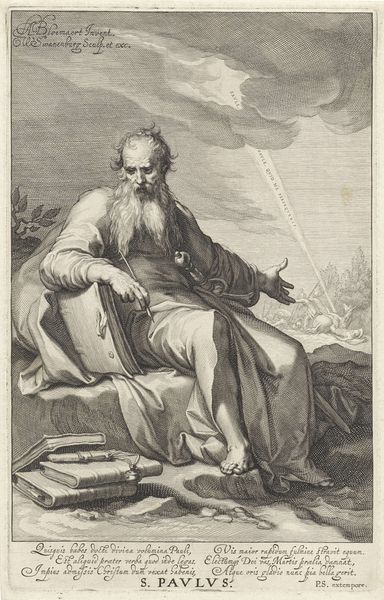
drawing, print, engraving
#
portrait
#
drawing
#
baroque
# print
#
line
#
history-painting
#
engraving
Dimensions: Sheet (trimmed): 13 7/16 × 8 9/16 in. (34.1 × 21.7 cm)
Copyright: Public Domain
Curator: Here we have Simon de la Vallée's "Saint Mathias," an engraving from 1726, now residing here at the Metropolitan Museum. The print depicts Saint Mathias in a landscape setting. It has such incredible line work. What catches your eye? Editor: It’s so intriguing – the image feels poised between worlds. He's framed in a clearing, almost a stage, but the etching's monochrome gives everything a quality of dream and austerity. The axe at the bottom left grounds him, almost literally. Curator: The axe is a potent symbol, indeed. Mathias was, according to tradition, martyred by beheading with an axe in Colchis, now modern-day Georgia. These sorts of visual cues speak volumes. It invites considerations of power and sacrifice in the Baroque Era. But to frame the inquiry into baroque sensibilities – how was saintliness being redefined politically? Editor: Exactly! And consider the landscape elements: clouds forming behind, as though this singular, solitary figure is one with the cosmos. It suggests a profound cultural understanding of individuals within larger networks, while using established visual markers like the axe and the saint's robe. Are these indicators of a timeless tale or markers of specific identities for people? How were they employed? Curator: I agree entirely. He’s presented in an idealized form typical of the time but what is that ideal reflecting? His hand is extended in what seems like both greeting and...instruction. This print reflects tensions within Baroque society of how knowledge and holiness ought to operate together or be understood, as we continue to see contestations of truth across nations and identities. Editor: Yes, the reaching hand. His very posture suggests not just authority, but a transition between the divine and earthly. His foot exposed near the axe signals his own human and vulnerable reality, regardless of being “chosen” as written below the figure in Latin script. Curator: Right, how identity is actively *conferred*, if we consider the scripture referenced here! In the Acts of the Apostles, he is selected to replace Judas Iscariot through prayer and the casting of lots, chosen via random draw from the many! In doing so we have more questions of election, the dynamics of marginalization or chosen-ness still reverberating today. Editor: This seemingly simple image speaks volumes. There's a potent symbolism here, so much conveyed within a framework. It reveals a historical, cultural and visual vocabulary still so pertinent today! Curator: Definitely. It showcases that, with meticulous lines, you can uncover how art becomes intertwined with identity formation across a historical period, echoing ideas even today. It has so much to teach!
Comments
No comments
Be the first to comment and join the conversation on the ultimate creative platform.
